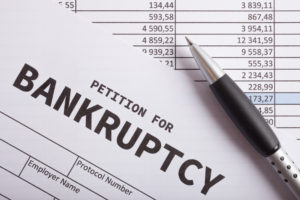Qualifying for Bankruptcy & Understanding the Chapter 7 Means Test

Dealing with overwhelming debt can be a distressing experience, leaving individuals and families searching for solutions to regain control of their finances. One option to consider is filing for Chapter 7 bankruptcy, which allows for the discharge of certain debts. However, not everyone is eligible to file for Chapter 7 bankruptcy. To determine eligibility, individuals must undergo the bankruptcy “means test.” This test evaluates whether your income is low enough to qualify for Chapter 7 bankruptcy or if an alternative option, such as Chapter 13 bankruptcy, is more suitable.
How Does the Chapter 7 Means Test Work?
The Chapter 7 means test is designed to assess whether individuals possess enough income to repay their debts. By examining your financial situation, the means test determines if Chapter 7 bankruptcy is an appropriate avenue for debt relief. Here’s a breakdown of how it works:
1. Median Income Comparison:
The first step involves comparing your “current monthly income” to the median income for households of the same size in your state. To calculate your current monthly income, multiply your gross income from the previous six months by two. If your income falls below the median, you pass the means test and can proceed with filing for Chapter 7 bankruptcy.
2. Deducting Allowable Expenses:
If your income exceeds the median, you will proceed to the next step, which entails deducting your allowed monthly expenses from your current monthly income. These expenses include necessities such as housing, transportation, and other essential costs. However, it’s important to note that the amounts you can deduct for these expenses may be limited depending on your county or metropolitan region.
3. Determining Disposable Income:
After deducting your allowable expenses, you arrive at your monthly “disposable income.” This is the amount that remains after accounting for necessary expenses. If your disposable income is deemed significant, it suggests that you may have the means to repay a portion of your unsecured debts, such as credit card bills, through a Chapter 13 repayment plan instead of Chapter 7 bankruptcy.
4. Chapter 7 or Chapter 13 Bankruptcy:
Finally, based on the calculation of your disposable income, you will either pass or fail the means test. If your disposable income is too high, you fail the test, and Chapter 7 bankruptcy may not be an option. Instead, you may need to consider a Chapter 13 repayment plan, which requires repaying a portion of your debts over a period of three to five years. On the other hand, if your disposable income is sufficiently low, you pass the means test and can proceed with filing for Chapter 7 bankruptcy.
It’s important to remember that the means test is specifically applicable to individuals with primarily consumer debts, not business debts. Additionally, certain veterans and military members may be exempt from taking the means test altogether.
To determine your eligibility for Chapter 7 bankruptcy under the means test, you can consult the U.S. Trustee Program website. They provide charts with median income levels for different states and household sizes. By comparing your income to the appropriate median, you can ascertain whether you meet the initial threshold for qualifying.
For a more comprehensive understanding of Chapter 7 bankruptcy eligibility and the means test, it is advisable to seek professional guidance from a bankruptcy attorney. For a free initial consultation, please contact our office at 413-732-8356.